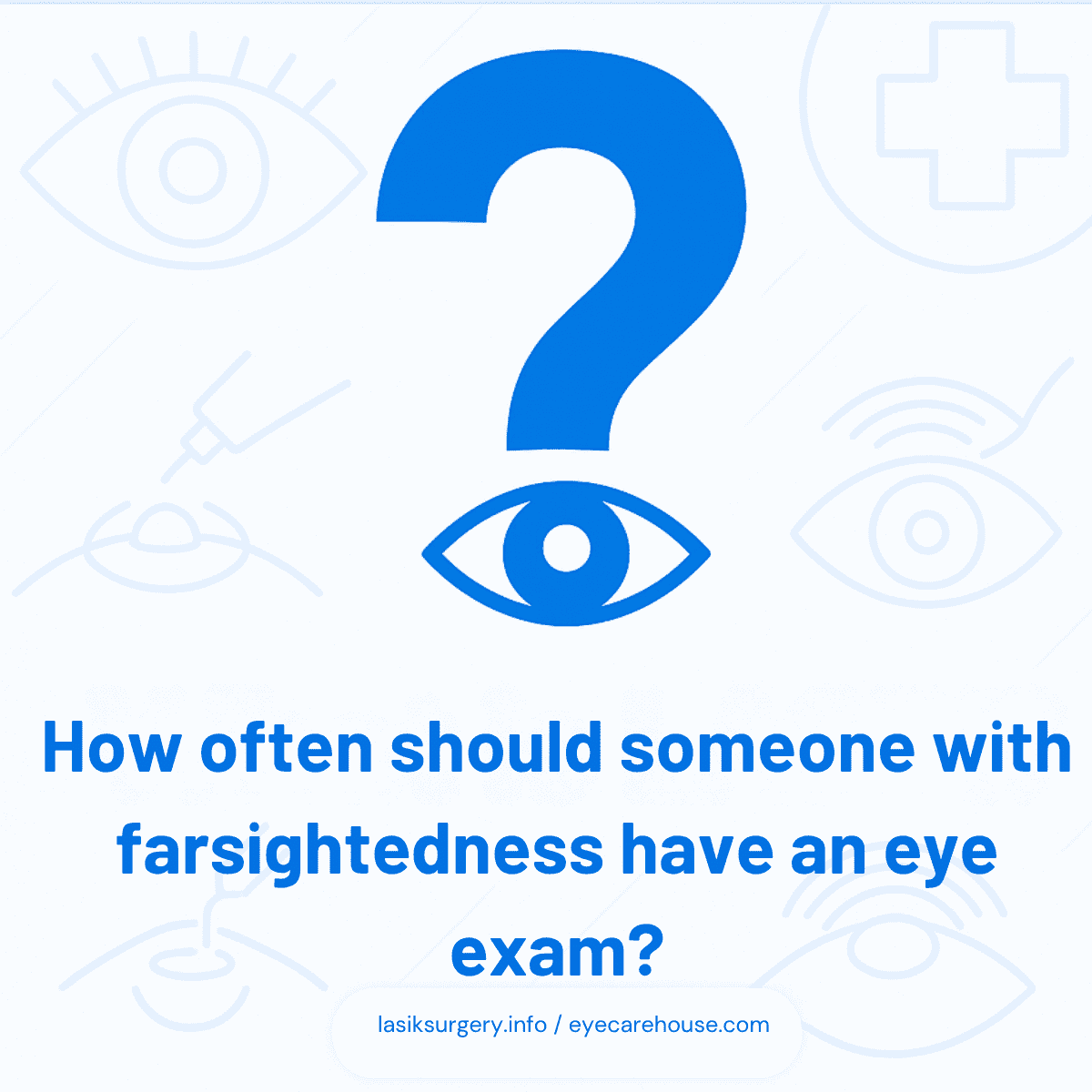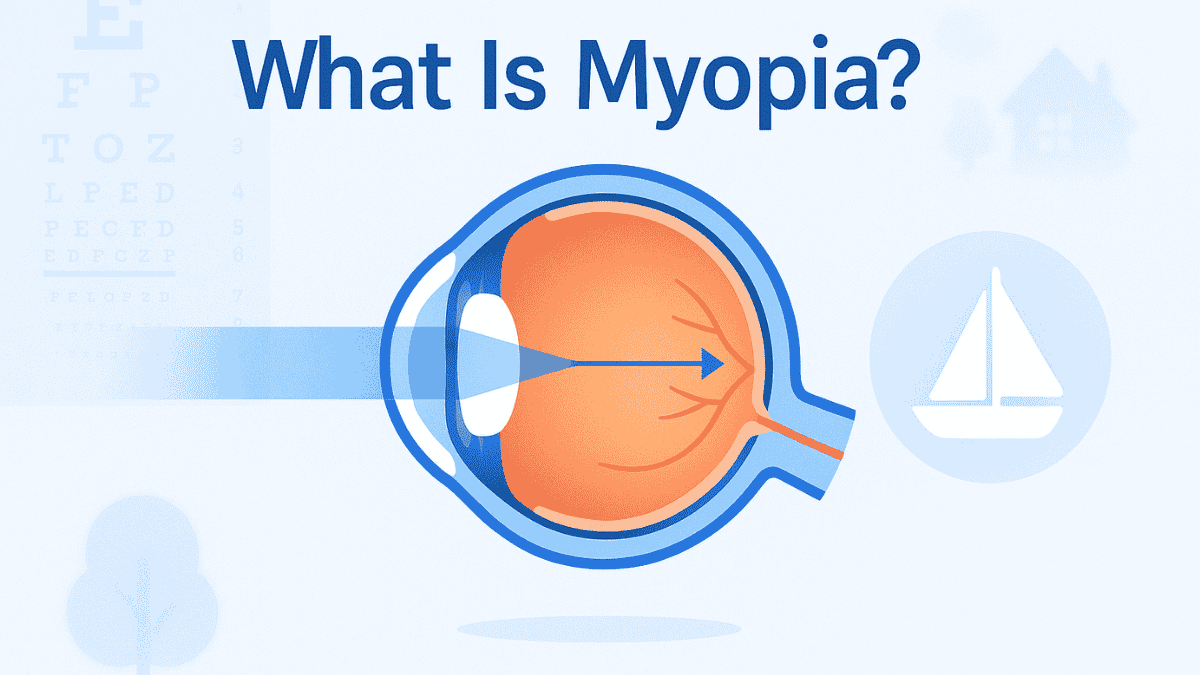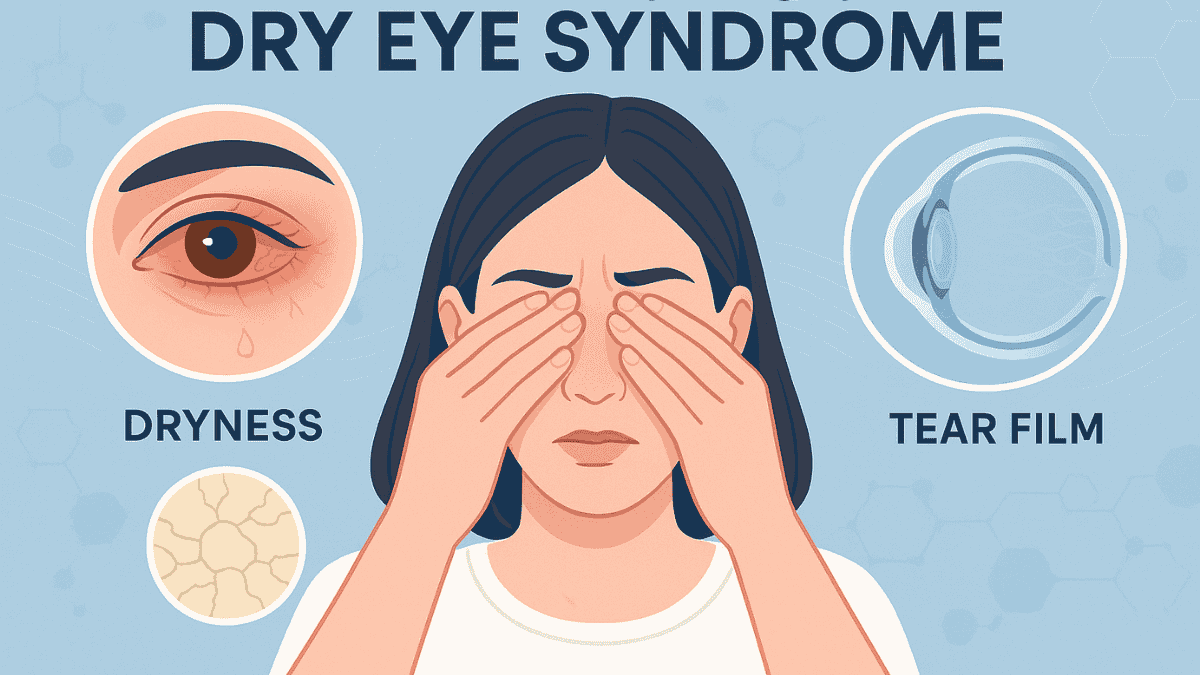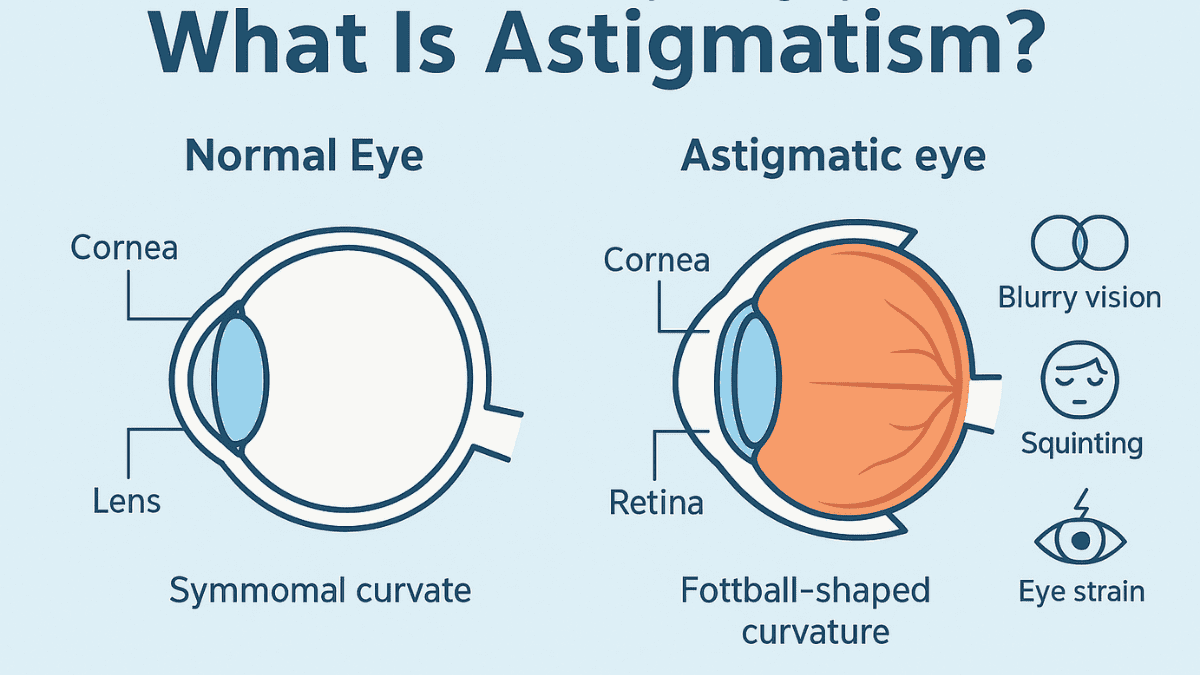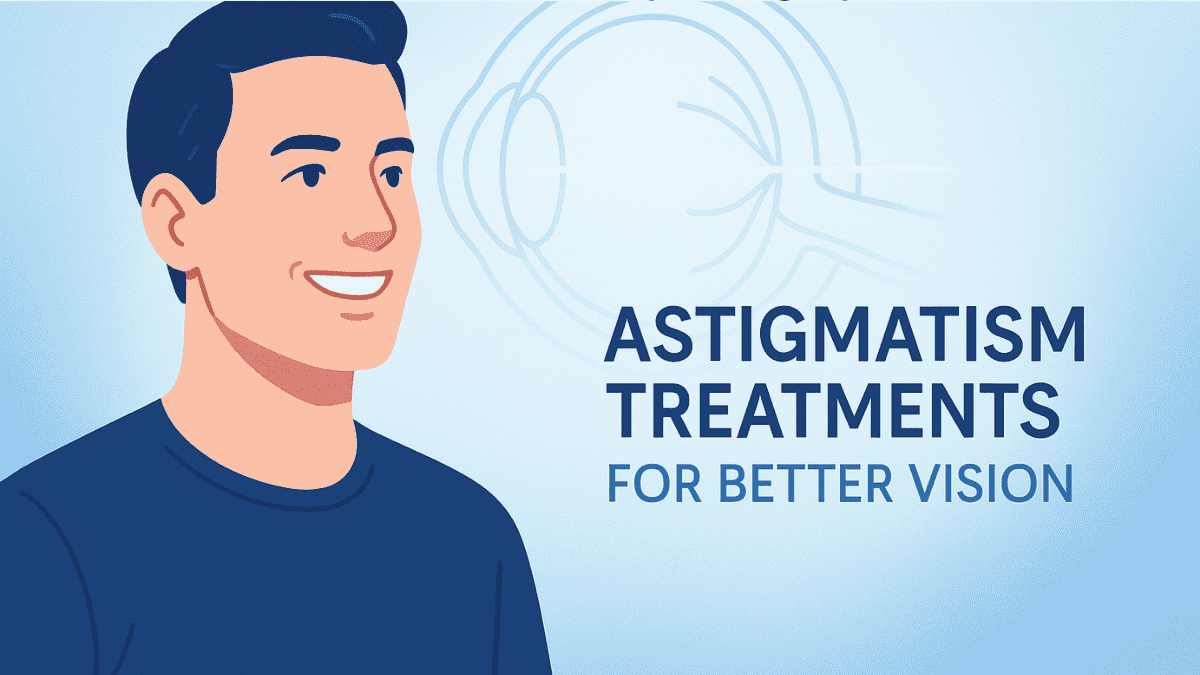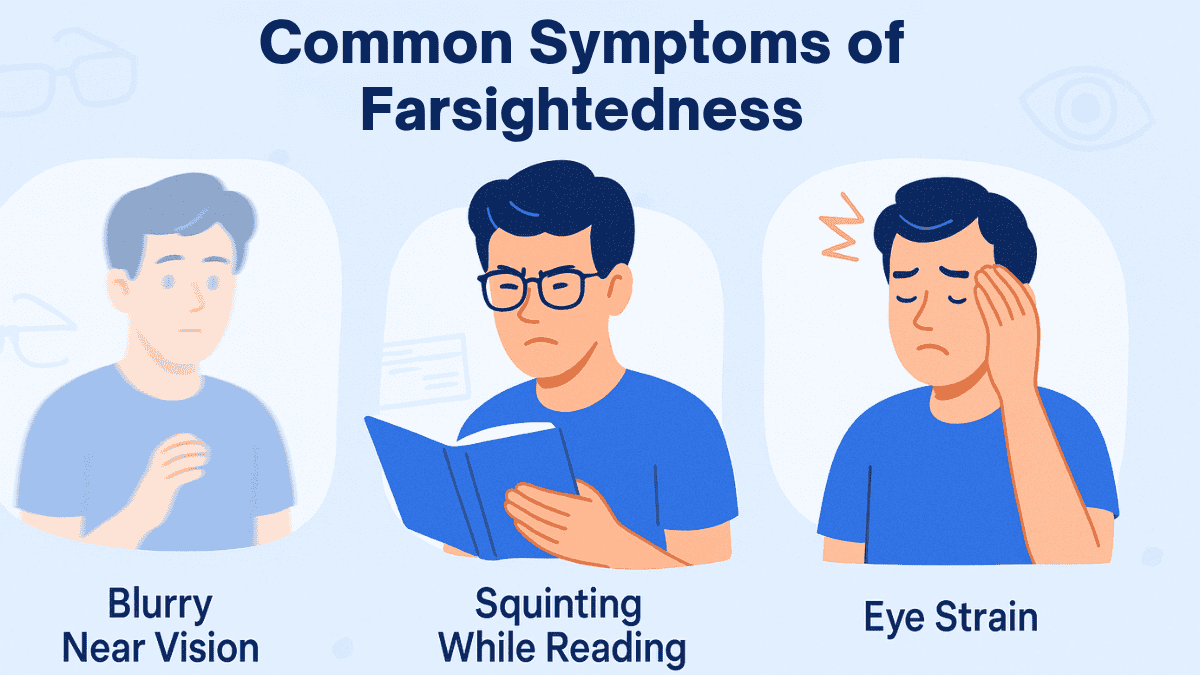
Do you find yourself squinting at your phone screen or struggling to see nearby objects clearly? Maybe reading a menu in a dimly lit restaurant feels like a blurry puzzle. You are not alone; this vision problem affects many. One common reason for such difficulties is understanding what is farsightedness.
This condition, also known as hyperopia, primarily makes close-up objects appear fuzzy while distant objects might remain clear. So, what exactly is farsightedness, and how does it influence your daily life? Let’s explore this common vision issue.
Farsightedness is an eye condition that can affect people of all ages. It might develop gradually or be present for many years. Gaining more knowledge about it helps in understanding your vision and the available choices for clearer sight and improved eye health.
Table of Contents
Understanding Farsightedness: More Than Just Blurry Close-Ups

To understand what is farsightedness, it helps to think about basic eye anatomy. Your eye works much like a camera. It has a lens that helps focus images by directing incoming light onto a light-sensitive surface at the back called the retina. For clear vision, light rays must converge precisely on the retina to create a sharp, focused image.
In cases of farsightedness, this focusing process encounters a snag. The light rays do not focus directly on the retina but rather at a theoretical point behind it. This typically occurs if your eyeball is shorter than average or if your cornea (the clear front surface) or lens has a less-than-ideal curvature. This refractive error primarily causes nearby objects to appear blurry.
Distant objects often remain clearer because the eye’s focusing mechanism doesn’t need to adjust as much for far vision. However, individuals with more severe farsightedness might experience blurry vision for distant objects as well. This difficulty with focusing on objects nearby distinguishes it from other vision problems.
Farsightedness is distinct from nearsightedness (myopia). With nearsightedness, distant objects appear blurry because light focuses in front of the retina. Both are common refractive errors, indicating that the eye does not bend or refract light correctly to produce a focused image. Understanding this difference in where the light focuses is fundamental to grasping these eye conditions.
What Causes Farsightedness? Peeking Behind the Scenes
Why do some people become farsighted while others do not? The development of farsightedness often relates to the physical characteristics of your eyes, particularly their eye anatomy. Sometimes, genetic factors also play a significant role in why farsightedness occurs.
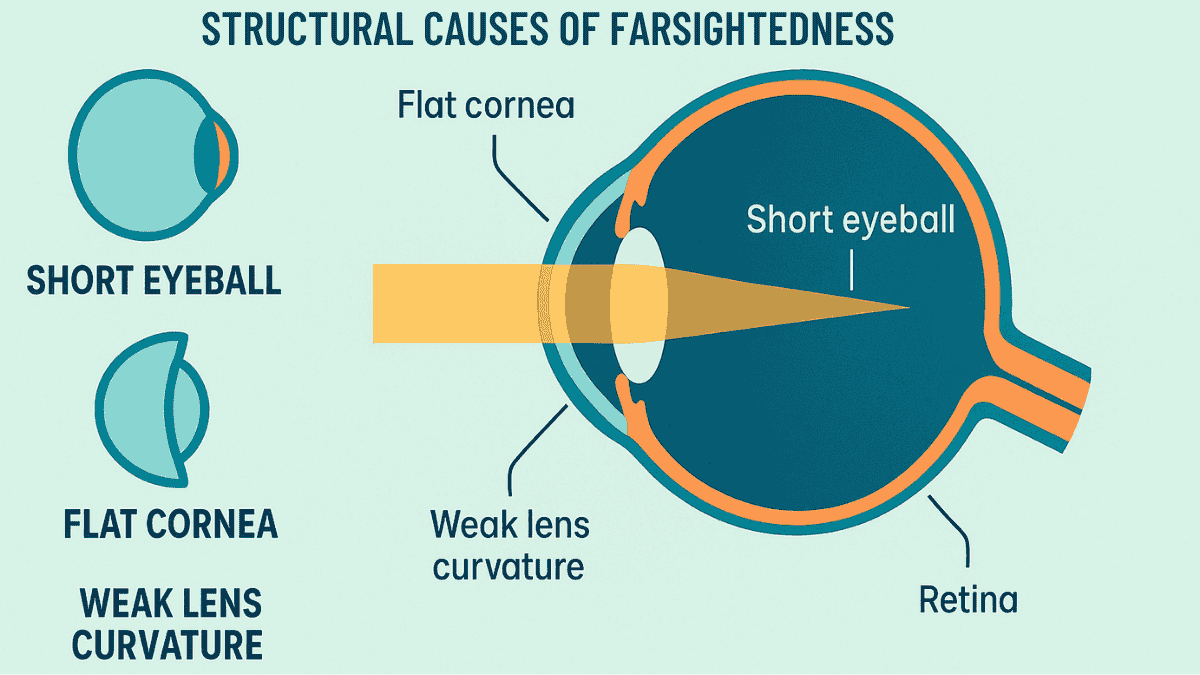
The Shape of Your Eye Matters
The most common reason farsightedness occurs is related to the length of the eyeball. If your eyeball is shorter from front to back than average, incoming light rays do not have sufficient distance to converge correctly on the retina. Instead, they aim for a focal point that would theoretically be behind it, causing a blurry image when looking at objects nearby.
The curvature of the cornea and lens also significantly impacts eye focusing. For optimal vision, these structures need a perfectly smooth curvature to bend light accurately. If the cornea is flatter than usual, or if the lens has insufficient focusing power, light will not refract sharply enough to form a focused image on the retina. These structural characteristics are typically present from birth and affect how the eye focuses images.
A perfectly smooth cornea helps ensure light passes through without distortion. Any deviation from this ideal shape can contribute to refractive errors. The lens also needs to maintain a smooth curvature and adequate flexibility to adjust focus for varying distances.
Genetics and Farsightedness
Heredity can influence the likelihood of developing farsightedness. If farsightedness is common in your family, your chances of experiencing this refractive error may be higher. Research indicates a genetic predisposition for various refractive errors, including hyperopia.
This genetic link doesn’t predetermine that you will develop farsightedness if your parents have it. However, it does increase the probability. Scientists continue to study the specific genes involved in general eye health and development.
Age and Farsightedness (A Note on Presbyopia)
It is crucial to differentiate between hyperopia and presbyopia, an age-related condition. Many individuals begin experiencing difficulty with close-up vision in their 40s. This change is often due to presbyopia kicking in.
Presbyopia occurs because the eye’s natural lens becomes less flexible with age. This reduced elasticity makes it harder to focus on close objects, a symptom very similar to that of farsightedness. However, the underlying causes are different, affecting eye focusing in distinct ways.
Hyperopia typically stems from the eye’s shape and can be present from an early age. Presbyopia is a consequence of the lens aging. An individual who has always been farsighted might notice their close vision deteriorating further when presbyopia sets in. Conversely, someone with previously perfect vision may start needing reading glasses due to presbyopia. Your eye doctor can readily distinguish between these two eye conditions during an eye examination.
Spotting the Signs: Common Symptoms of Farsightedness
How can you tell if you might be farsighted? Symptoms can differ significantly among individuals. The extent of your farsightedness and your age often influence what you experience. Younger people with mild farsightedness may not notice problems initially, as their eyes can sometimes compensate for the focusing difficulty, delaying the appearance of blurred vision.
One of the most common indications of what is farsightedness is difficulty focusing on close-up objects. Reading small print, threading a needle, or viewing your smartphone screen can become challenging. You might instinctively hold items further away to achieve clearer vision; this is a classic sign of this particular vision problem.
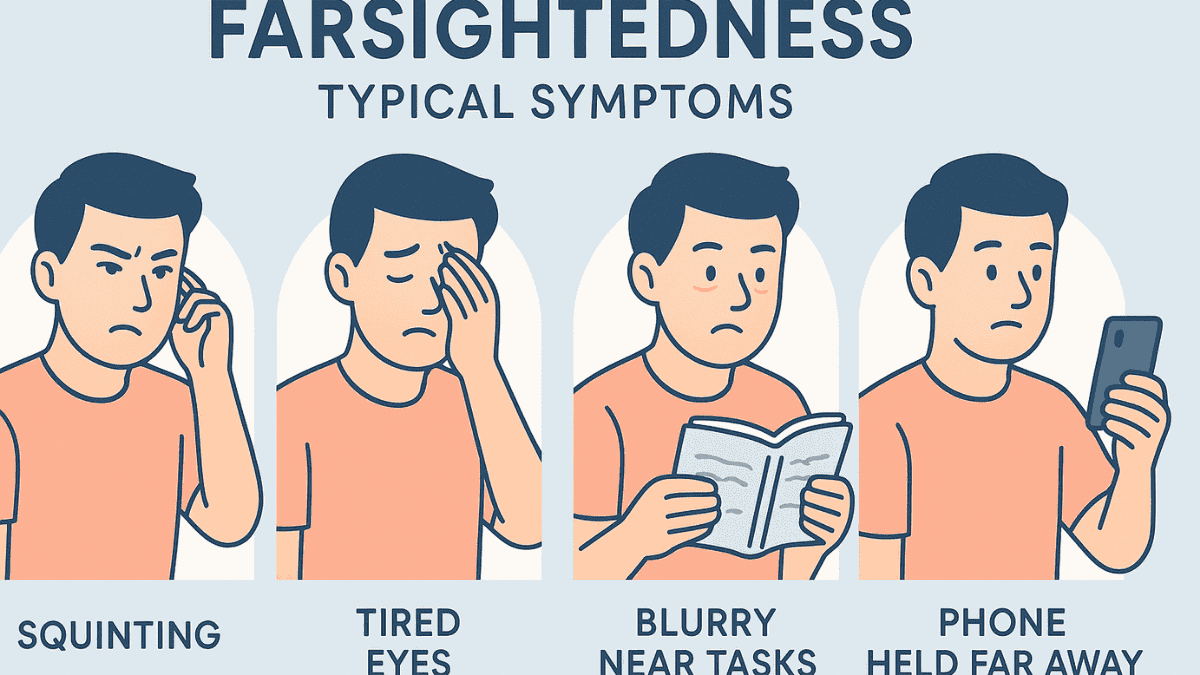
Eye strain is another significant symptom. Your eyes must exert extra effort to focus, particularly during tasks requiring near vision. This can lead to feelings of tiredness, aching, or strain in the eyes. Such strain can also cause headaches, especially after prolonged activities like reading or computer work. Some individuals also report burning eyes or general eye discomfort. These symptoms can sometimes be mistaken for dry eye, another common eye condition that requires attention from medical professionals.
Do you find yourself squinting to read text messages or see small details? Squinting is an involuntary reflex to try and improve focus by slightly altering how light enters the eye. While it might offer temporary relief, it signals that your eyes are working too hard. You might also notice overall blurry vision for objects nearby, not just printed text. This persistent blurred vision warrants an eye exam.
Children with farsightedness may exhibit different signs. They might not complain of blurry vision because it is the only vision they have ever known. Instead, they may show a lack of interest in books or close-up tasks. They might rub their eyes frequently, develop crossed eyes (strabismus), or have trouble with depth perception. If significant or severe farsightedness goes uncorrected in children, it can lead to amblyopia (lazy eye). Uncorrected farsightedness can thus have long-term consequences if parents do not notice problems during the school years.
How Doctors Diagnose Farsightedness
If you suspect you might have farsightedness, scheduling an eye exam with an eye doctor is the recommended course of action. Only an optometrist or ophthalmologist, both highly trained medical professionals, can provide a definitive diagnosis and discuss diagnosis treatment options. Regular eye exams are crucial for everyone, even if you do not notice problems, as they can detect eye conditions early.
A comprehensive eye examination, often referred to as ocular examinations, includes several tests to evaluate your vision and general eye health. The familiar Snellen chart, used to test distance vision, is good for identifying nearsightedness but may not always reveal farsightedness, particularly if your eyes compensate well. A medically reviewed approach to diagnosis ensures all aspects of your vision are checked.
Phoropter and Refraction Test
A primary test for diagnosing farsightedness is the refraction test. During this test, you will look through a device called a phoropter, which resembles a large mask fitted with numerous lenses. Your eye doctor will switch various lenses in front of your eyes, asking, “Which is clearer, lens one or lens two?” This process helps determine the precise lens power needed to correct your vision. It measures how your eyes refract light and identifies the prescription that provides the sharpest focused image.
The refraction test is critical because it not only identifies farsightedness but also quantifies its severity. This information is essential for prescribing the correct corrective lenses. The goal is to find the lens that allows light to focus directly on the retina, resulting in clear vision for both distant objects and those nearby.
Retinoscopy
Retinoscopy is another valuable diagnostic tool, particularly for young children or individuals unable to respond verbally to the refraction test. In this procedure, the eye doctor shines a light into your eye and observes the reflection from your retina. The nature of this reflection provides important clues about your eye’s refractive error, allowing for an objective estimation of your prescription without requiring much active participation from you.
This test is often performed before the phoropter test to give the doctor a starting point for the refraction. It is a quick and painless way to assess the eye’s focusing ability. This technique helps ensure an accurate prescription, even for patients who cannot articulate their visual experiences clearly.
Diagnosing farsightedness in children is especially important. If left uncorrected, it can lead to more serious vision problems such as amblyopia (lazy eye), where one eye fails to develop normal vision, or strabismus (crossed eyes). Early detection leads to timely intervention, which generally results in better visual development. Organizations like the American Academy of Ophthalmology and the American Optometric Association highlight the importance of these early ocular examinations. If you want to schedule an appointment, you can often request appointment options online or by phone with your local eye care provider or clinic staff.
Your Options: Treating and Managing Farsightedness
Fortunately, farsightedness is typically straightforward to correct. The primary objective of any treatment is to enable your eyes to focus light accurately onto the retina. This correction aims to provide clear vision, particularly for challenging close-up tasks. Several effective methods are available to manage this common vision problem, from corrective lenses to eye surgery.
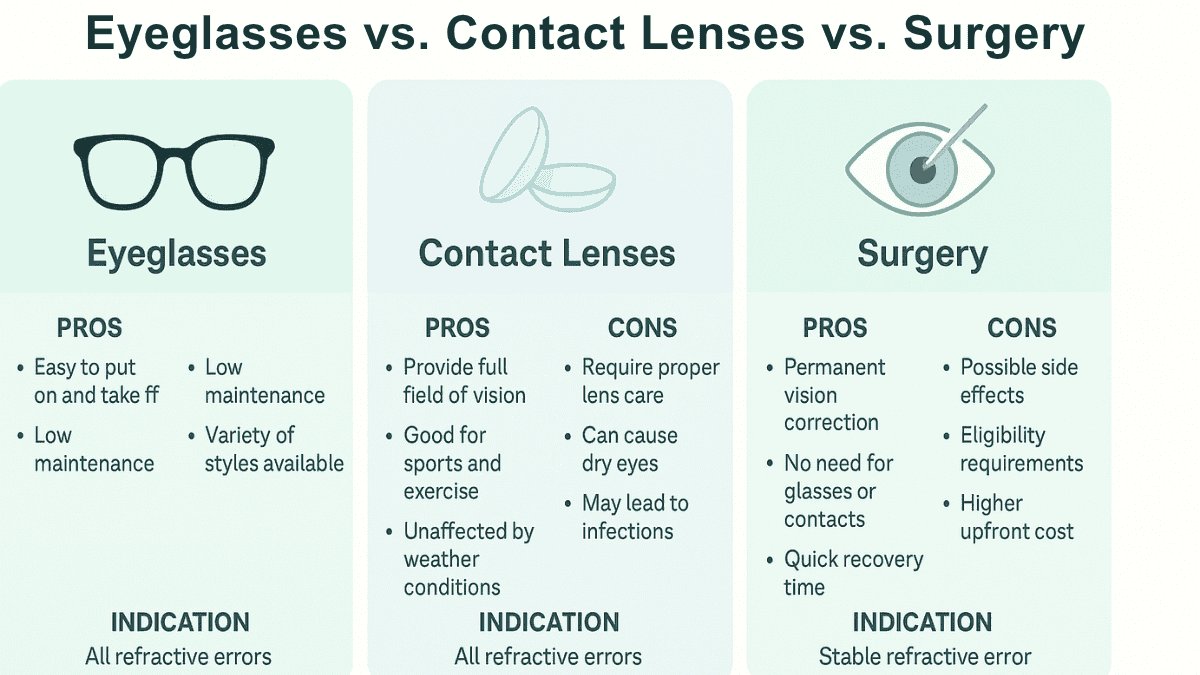
Eyeglasses: The Classic Solution
Eyeglasses are the most prevalent and often the simplest form of corrective lenses for farsightedness. If you are farsighted, you will be prescribed convex lenses, which are thicker in the center and thinner at the edges. These lenses bend incoming light rays inward before they reach your eye. This pre-focusing action helps ensure the light converges properly on your retina, instead of behind it, resulting in a clear, focused image.
Various types of eyeglass lenses are available to correct farsightedness. Single-vision lenses are designed for one specific focusing distance, typically near vision for farsighted individuals. If you also experience difficulty with distance vision or have coexisting presbyopia, you might benefit from bifocals or progressive lenses. Progressive lenses provide a smoother transition between different focal zones without the visible line characteristic of bifocals, offering a more natural visual experience. Your eye care professional can guide you on the best options based on your prescription and lifestyle.
Contact Lenses: A Closer Look
Contact lenses function on the same optical principle as eyeglasses. They utilize a convex curvature to aid in focusing light directly onto your retina. Many individuals prefer contact lenses because they offer a wider field of vision and do not alter one’s appearance as glasses can. They are also highly suitable for sports and active lifestyles, providing greater freedom of movement.
A variety of contact lenses are available, including soft lenses, which are popular for their comfort, and rigid gas permeable (RGP) lenses, known for providing crisp vision. Some lenses are designed for daily disposability, while others can be worn for extended periods. Your eye doctor will help you determine if contact lenses are appropriate for you and select the type that best fits your eye health, prescription, and lifestyle needs. Maintaining proper hygiene and care is essential when using contact lenses to prevent eye infections and conditions like dry eye.
Refractive Surgery: A More Permanent Fix?
For some adults, refractive surgery may offer a way to reduce or eliminate dependence on glasses or contact lenses. The most widely recognized type of eye surgery for this purpose is LASIK eye surgery (Laser-Assisted In Situ Keratomileusis). During LASIK, a surgeon employs a specialized laser to reshape the cornea. This alteration changes how light enters the eye, enabling it to focus correctly on the retina.
PRK (Photorefractive Keratectomy) is another laser eye surgery option that reshapes the cornea’s surface, often recommended if LASIK is not suitable. Additionally, Refractive Lens Exchange (RLE) is a procedure where the eye’s natural lens is replaced with an artificial intraocular lens (IOL) tailored to the correct focusing power. Not everyone is an ideal candidate for refractive surgery. Factors such as age, prescription stability, corneal thickness, and overall eye health are important considerations.
A comprehensive consultation with an ophthalmologist specializing in refractive surgery is necessary to determine if it is a safe and effective choice for you. Reputable sources like the Mayo Clinic, whose Mayo Clinic staff are experts in the field, or the Cleveland Clinic provide extensive, medically reviewed information on these procedures. The National Eye Institute and the Merck Manual also offer professional insights into various eye conditions and treatments. Some patients may inquire about financial assistance programs if the cost of eye surgery is a concern.
Living with Farsightedness: Tips for Daily Life
Whether you manage farsightedness with glasses, contact lenses, or have undergone refractive surgery, certain lifestyle adjustments can make daily activities more comfortable. Prioritizing good lighting is beneficial. Ensure that areas where you perform close work, such as reading, crafting, or using a computer, are adequately illuminated. Proper lighting can significantly reduce eye strain and make focusing less demanding.
If your work or leisure involves extended periods in front of digital screens, it’s important to take frequent breaks. The 20-20-20 rule is a helpful practice: every 20 minutes, shift your gaze to an object at least 20 feet away for a minimum of 20 seconds. This simple exercise allows your eye focusing muscles to relax. Adjusting the distance and angle of your screens or books can also provide relief. Experiment to find a comfortable range that minimizes strain and maximizes clarity for objects nearby.
Consider ergonomic adjustments to your workspace. Positioning your computer screen slightly below eye level can be more comfortable for your neck and eyes. Remember to blink often, especially when concentrating on screens, to help prevent dry eye symptoms. Staying hydrated also contributes to general eye comfort.
Even if your vision seems stable and well-corrected, maintaining regular eye care appointments is essential for general eye health. Your prescription can change over time, particularly as you age. During these eye exams, your eye doctor will not only check your vision but also screen for other eye conditions and potential eye disease. Consistent professional eye care is fundamental to preserving optimal vision throughout your life. Always discuss any new or worsening symptoms with your eye care provider promptly.
Farsightedness in Children: What Parents Should Know
It may be surprising to learn that it is quite common for young children to exhibit some degree of farsightedness. Their eyes are still in a crucial stage of development. As children grow, their eyeballs typically lengthen, and many outgrow mild farsightedness naturally without requiring any intervention. However, this is not always the outcome for every child.
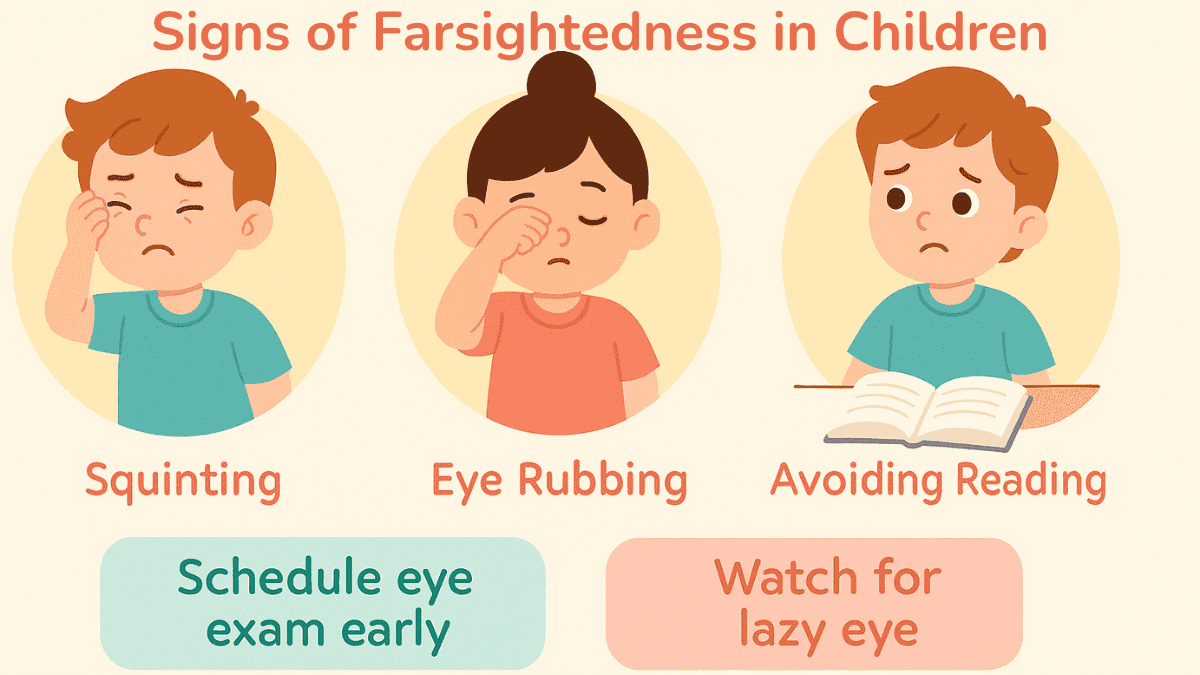
If a child’s farsightedness is more significant, or if it does not resolve with age, it warrants professional attention from an eye doctor. As previously noted, children may not articulate that “things are blurry” because they might not know any different. Instead, parents should watch for behavioral cues: a lack of interest in reading or drawing, frequent eye rubbing, or apparent difficulty with tasks that demand good hand-eye coordination. Sometimes, one eye may drift inward or outward, a condition known as strabismus, or crossed eyes. If you notice problems like these, scheduling an eye examination is advisable.
The primary concern with significant, uncorrected farsightedness in children is the potential development of amblyopia, commonly called lazy eye. If one eye experiences considerably more blurred vision than the other due to farsightedness (or other refractive errors), the brain may begin to favor the eye providing the clearer image. Over time, this can impede the proper development of vision in the blurrier eye. Early detection during the preschool or early school years and appropriate treatment, often involving corrective lenses like eyeglasses, can prevent amblyopia from becoming a persistent issue and supports the development of strong vision in both eyes. Regular vision screenings can help identify children who need a full eye exam.
The Difference Between Farsightedness and Presbyopia
While discussed earlier, the distinction between farsightedness (hyperopia) and presbyopia merits further clarification due to common confusion. Both conditions result in difficulty seeing close-up objects clearly. However, their underlying causes are different, and understanding what is farsightedness includes recognizing what it is not.
Hyperopia is generally linked to the physical structure of the eye: either the eyeball is too short, or the cornea or lens has insufficient curvature. This anatomical characteristic causes light to attempt focusing behind the retina. Hyperopia can be present from birth or early childhood, though mild farsightedness might not produce noticeable symptoms until later if the eye’s focusing muscles can effectively compensate.
Presbyopia, conversely, is an age-related phenomenon. It typically becomes apparent around the age of 40. As individuals age, the natural lens within the eye gradually becomes stiffer and loses its flexibility. This diminished elasticity makes it more challenging for the lens to adjust its shape to focus on objects nearby. Consequently, even those who have enjoyed perfect vision throughout their lives will likely develop presbyopia and require reading glasses or other corrective measures at some point.
It is entirely possible for an individual with pre-existing farsightedness to also develop presbyopia as they get older. When this occurs, the difficulties with close-up vision can become more pronounced. Your eye doctor can accurately diagnose both conditions during a comprehensive eye examination and recommend the most suitable vision correction strategy to ensure clear vision at all distances. This might involve multifocal lenses or separate prescriptions for different tasks.
Conclusion
Grasping what is farsightedness, medically termed hyperopia, is crucial for achieving better vision. This common eye condition causes nearby objects to appear blurry because incoming light focuses at a point beyond your retina, frequently due to a shorter eyeball or irregularities in the cornea’s or lens’s smooth curvature. While it can lead to symptoms like eye strain and headaches, particularly during close-up tasks, farsightedness is generally very manageable.
Effective solutions range from traditional corrective lenses such as eyeglasses and contact lenses to more permanent options like refractive surgery. If you are experiencing symptoms indicative of farsightedness or if considerable time has passed since your last eye exam, arranging a visit with an eye care professional is recommended. They can confirm a diagnosis, explain what is farsightedness as it pertains to your individual eye anatomy, and help you choose the best treatment for your specific needs and lifestyle.
Remember, regular eye exams are vital not just for addressing refractive errors like farsightedness, but also for monitoring your overall eye health and detecting any potential eye disease early. Taking proactive steps in your eye care can help you enjoy clear and comfortable vision for years to come. For more information, resources from the National Eye Institute or the American Optometric Association can be very helpful.
Farsightedness, or hyperopia, occurs when light entering the eye focuses behind the retina, making close objects appear blurry. This typically results from a shorter-than-normal eyeball or a flat cornea.
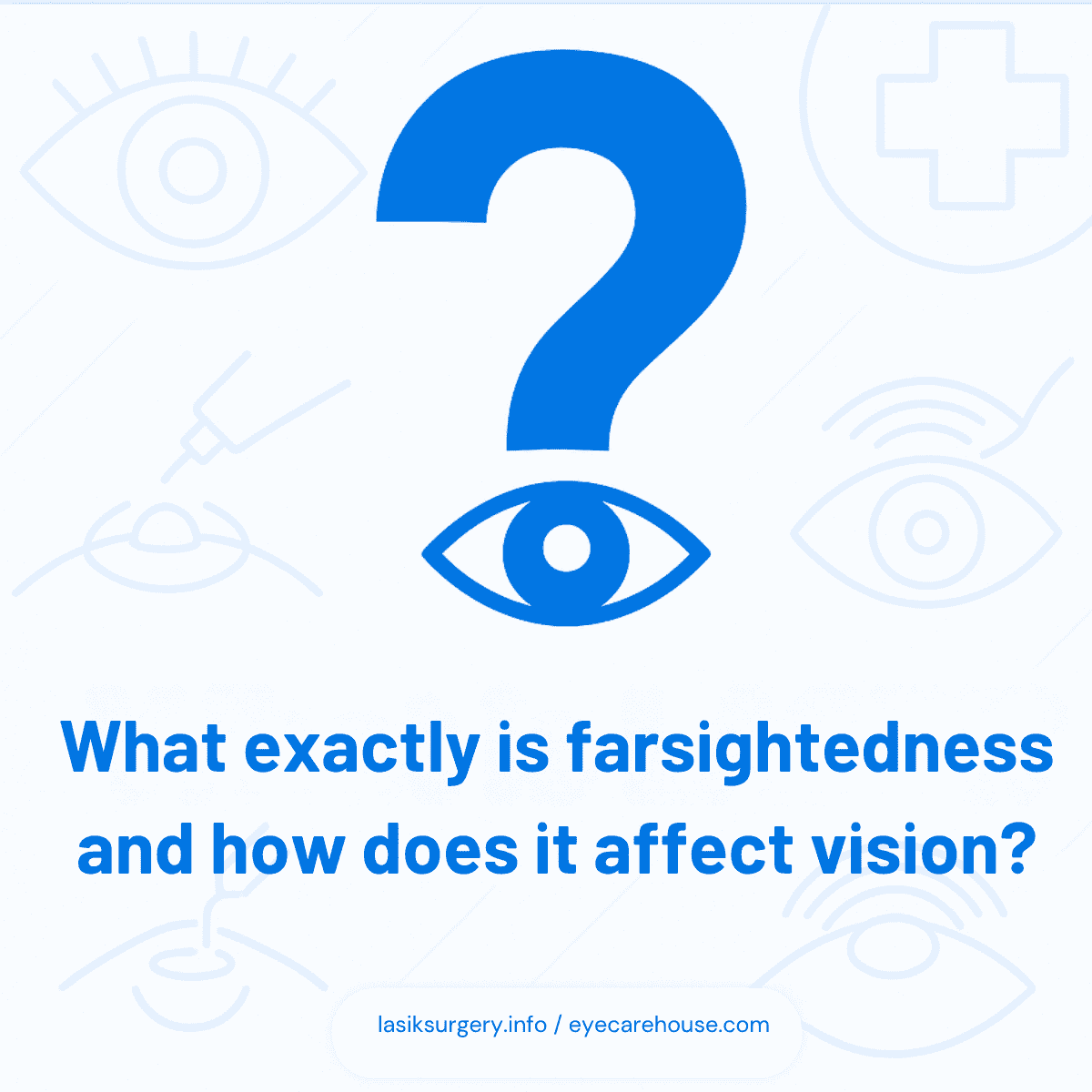
People with farsightedness often experience blurry near vision, eyestrain, headaches, difficulty reading, and the need to squint, especially during tasks like using a smartphone or reading a book.
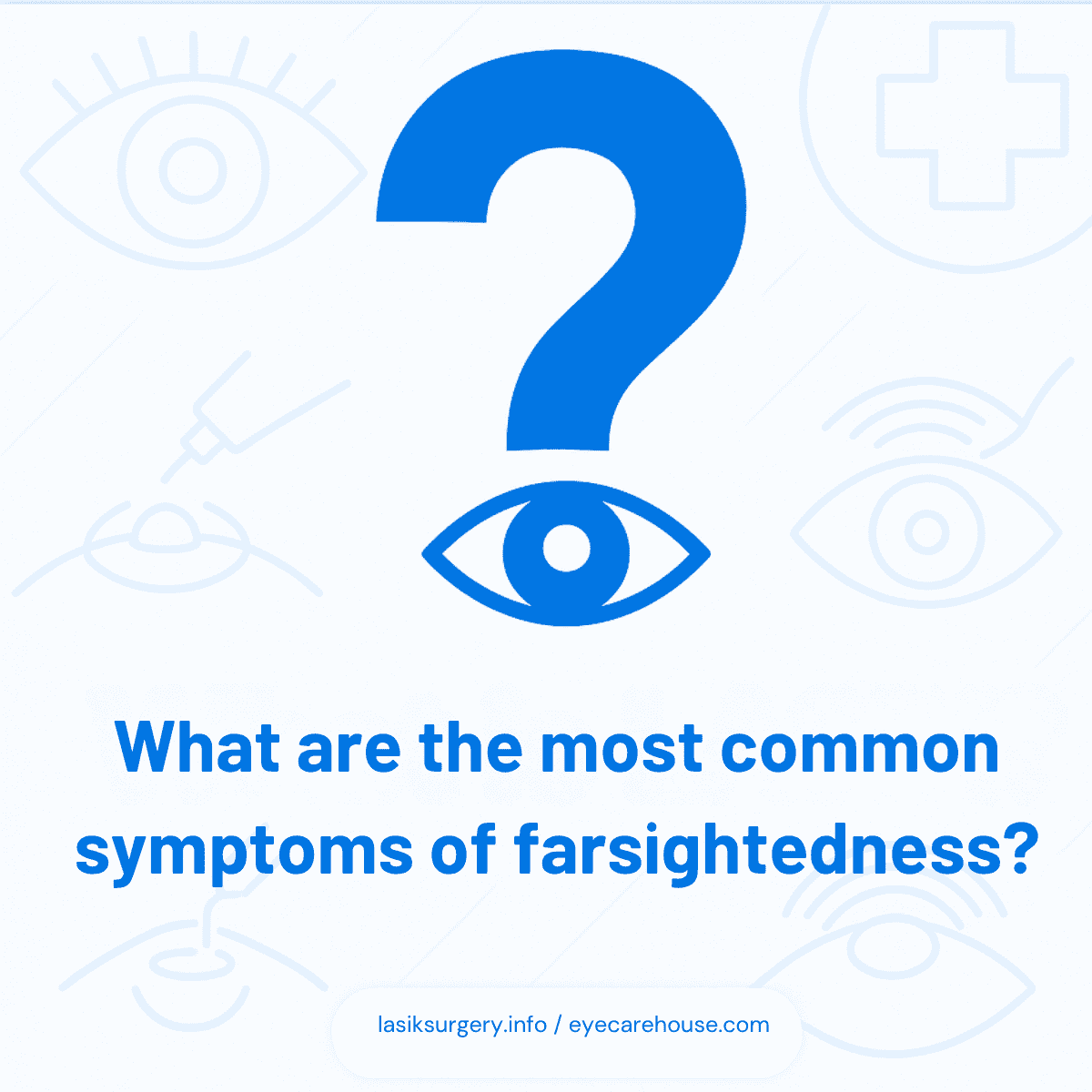
Yes, the primary cause of farsightedness is a shorter eyeball or a flatter cornea, which are often hereditary traits. Genetics plays a significant role in determining eye shape.
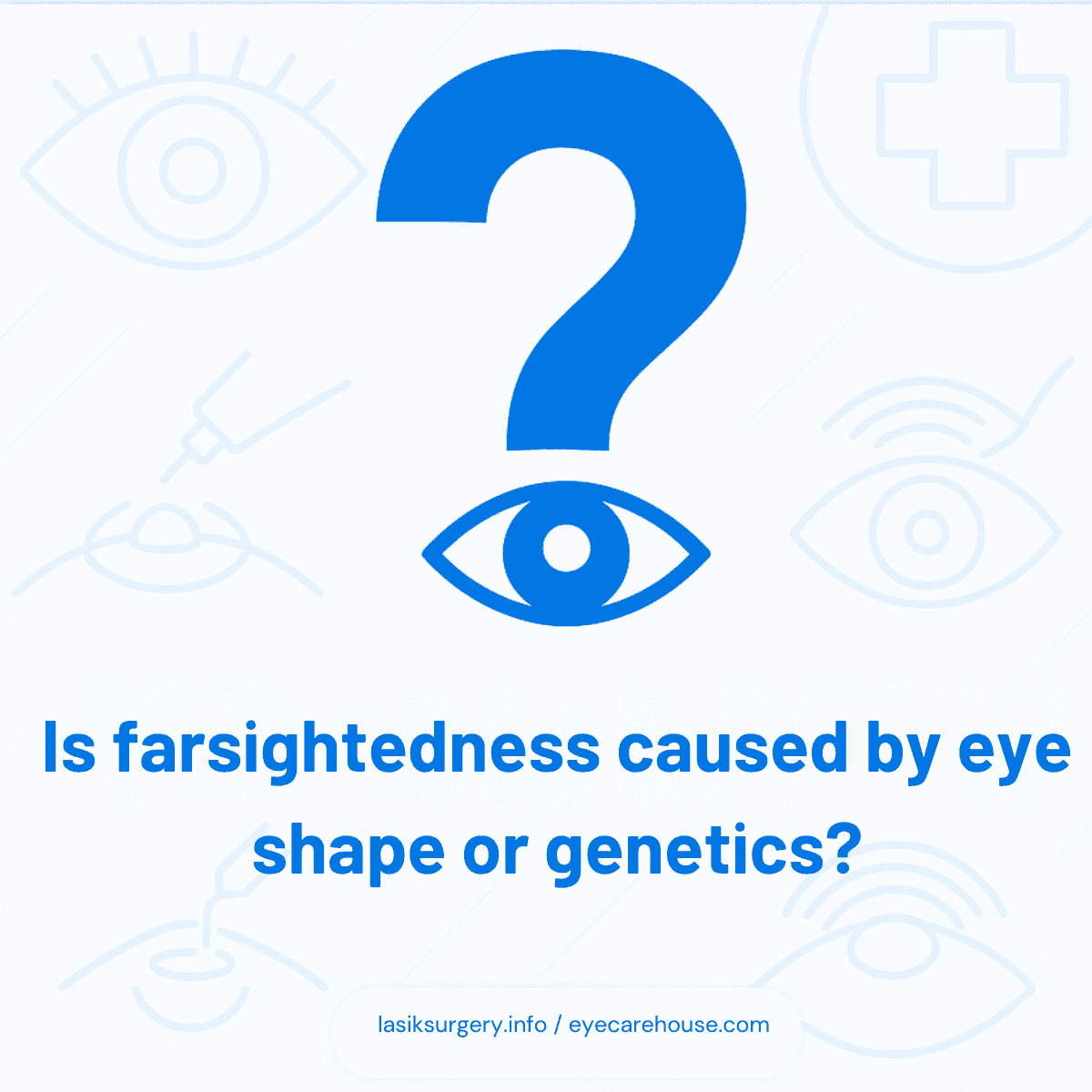
Farsightedness is usually diagnosed during a comprehensive eye exam involving a refraction assessment and a visual acuity test. A professional optometrist or ophthalmologist uses lenses to measure how light focuses.
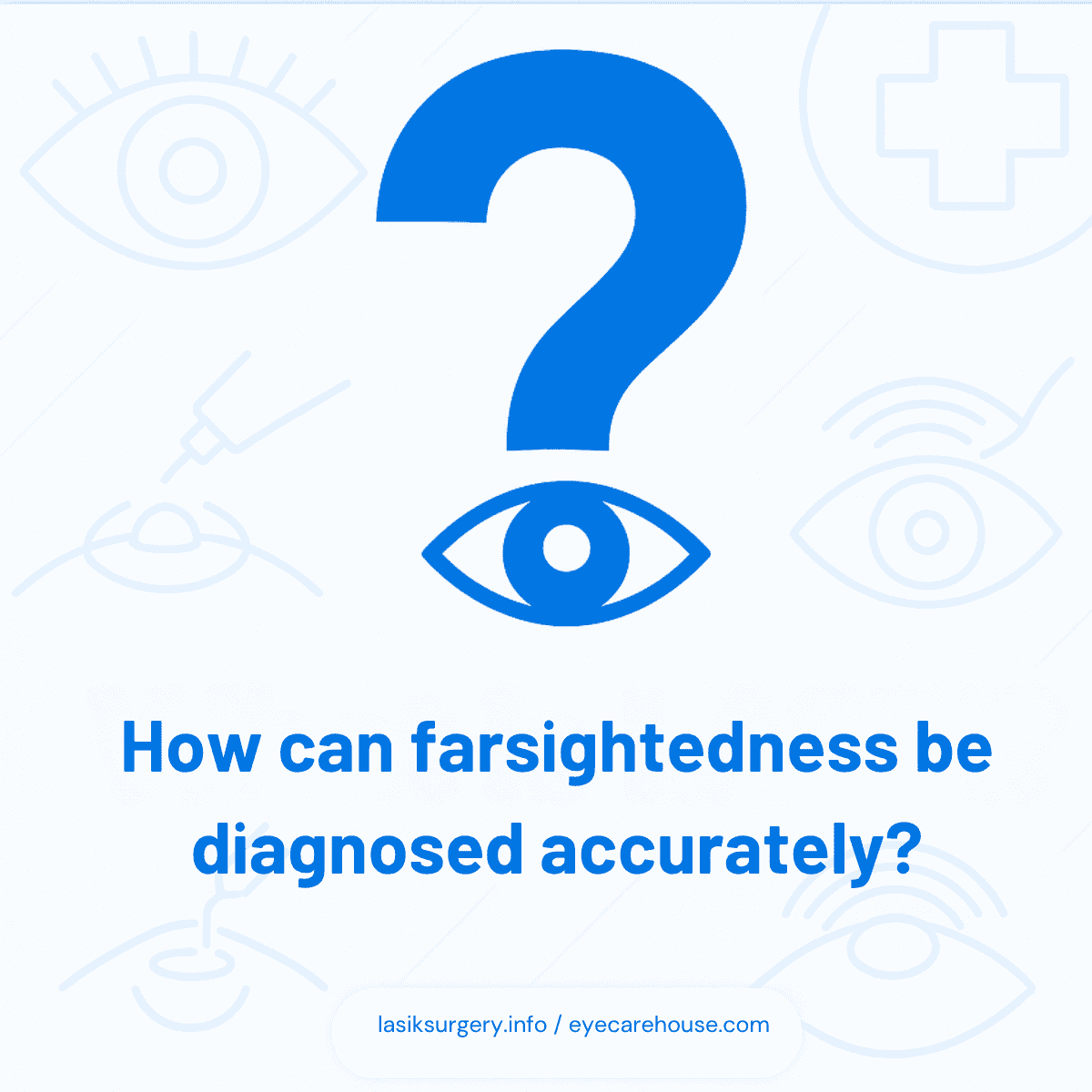
Treatment options include eyeglasses, contact lenses, and refractive surgeries like LASIK or PRK. The best choice depends on the individual’s prescription, age, and lifestyle preferences.
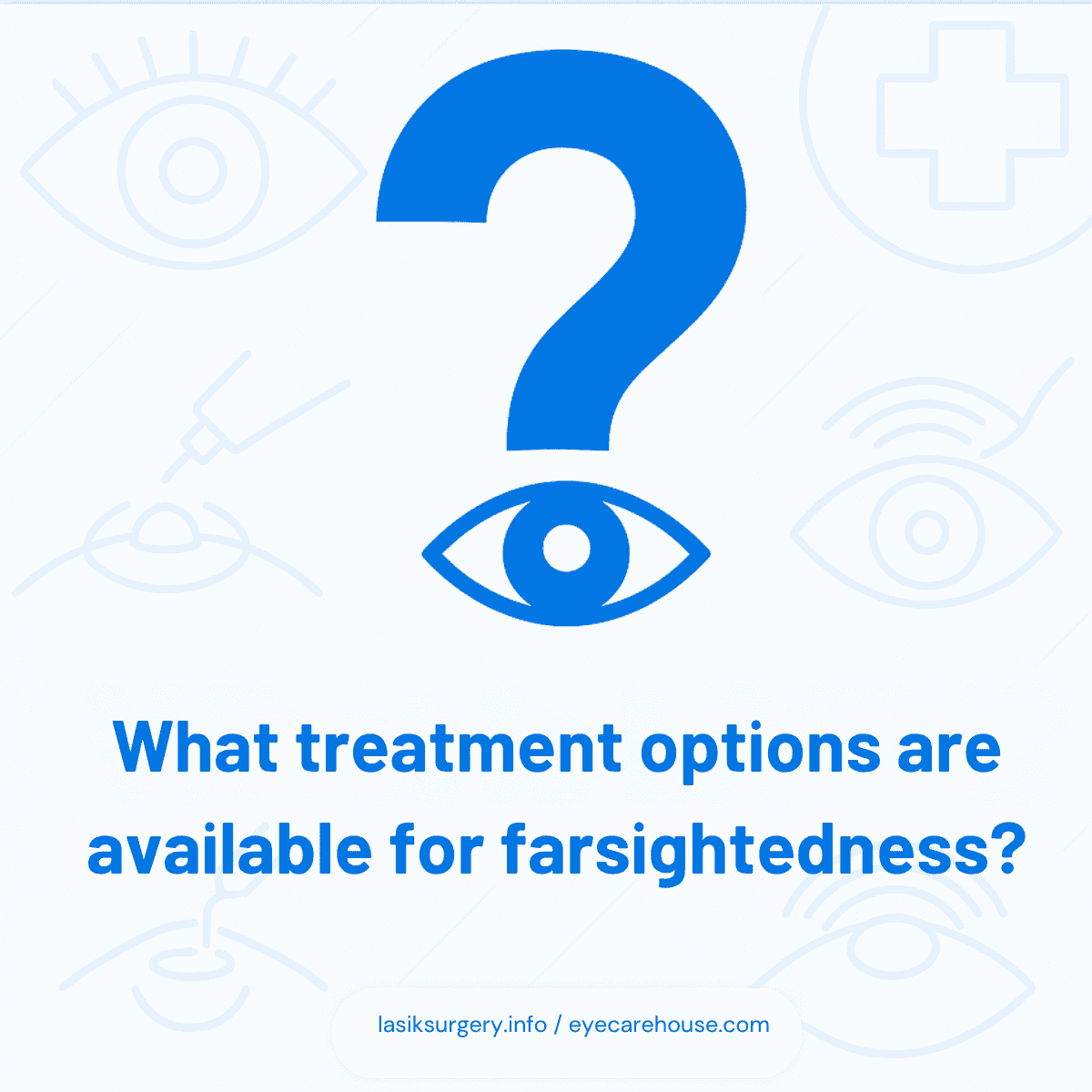
Yes, farsightedness can be present from birth and is common in young children. Early detection is important to prevent lazy eye (amblyopia) and support proper visual development.
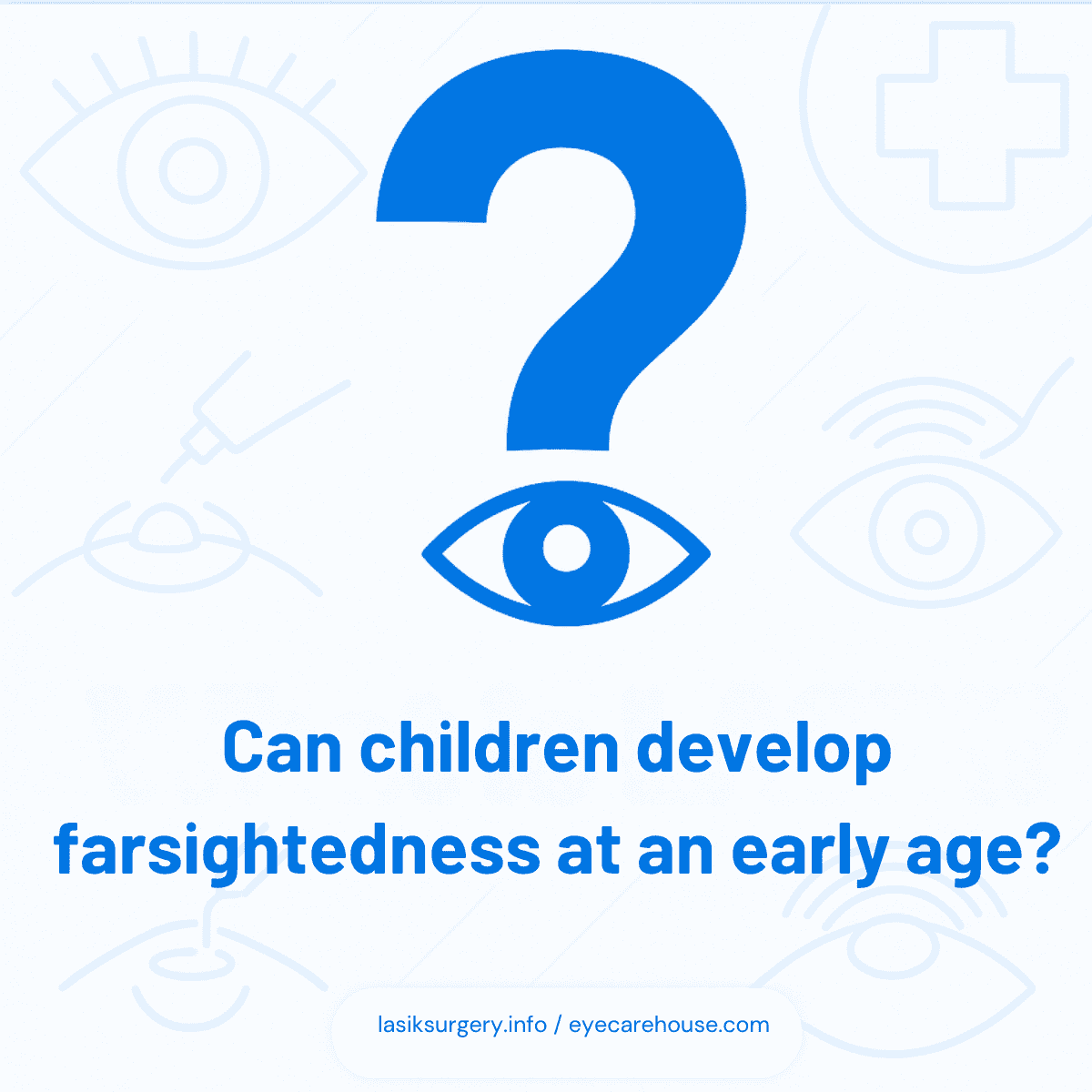
LASIK is often used to treat mild to moderate farsightedness by reshaping the cornea to better focus light onto the retina. However, not everyone is a candidate for LASIK surgery.
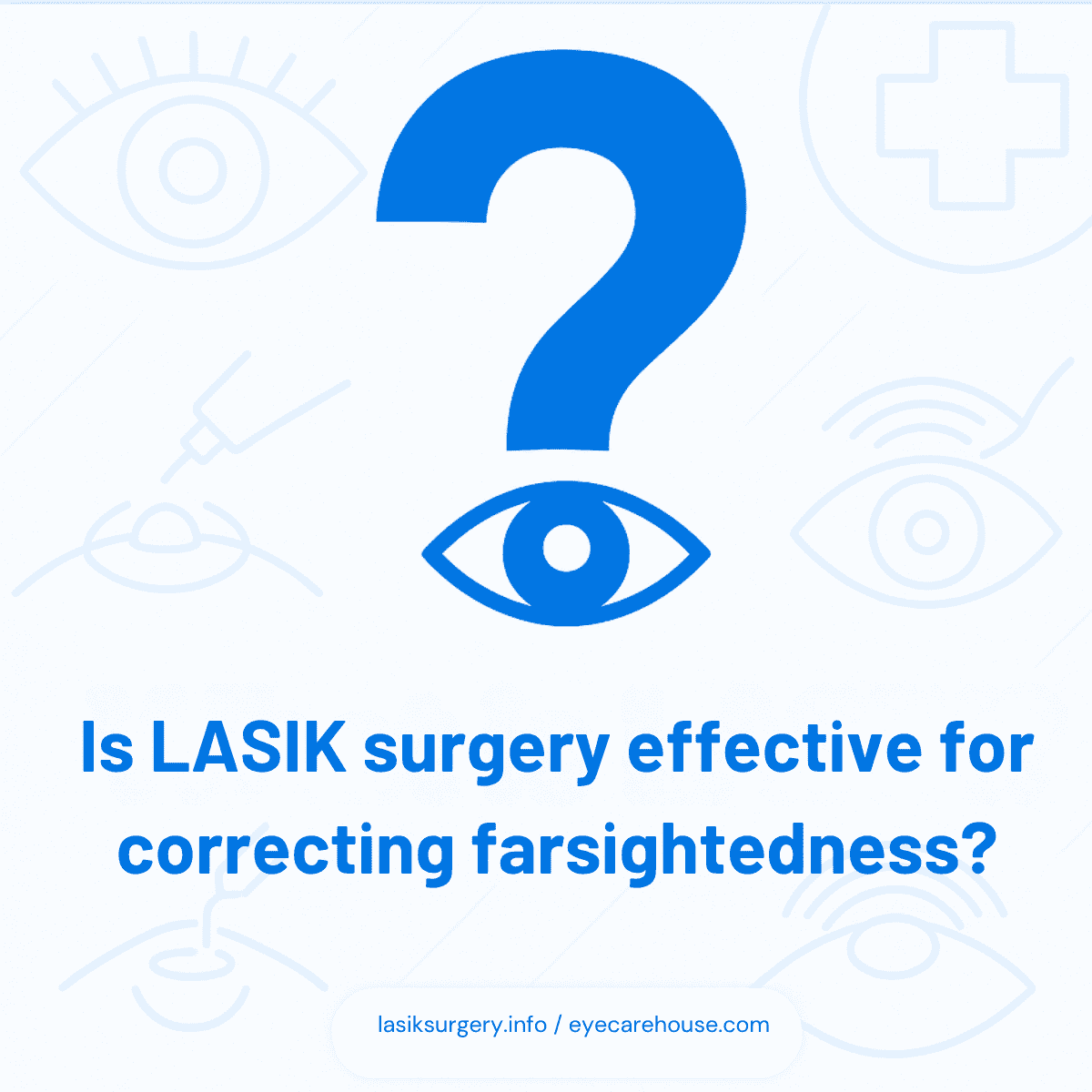
If untreated, farsightedness can lead to persistent eye strain and headaches. Over time, the eyes may have to work harder, and vision problems can increase, especially with age.
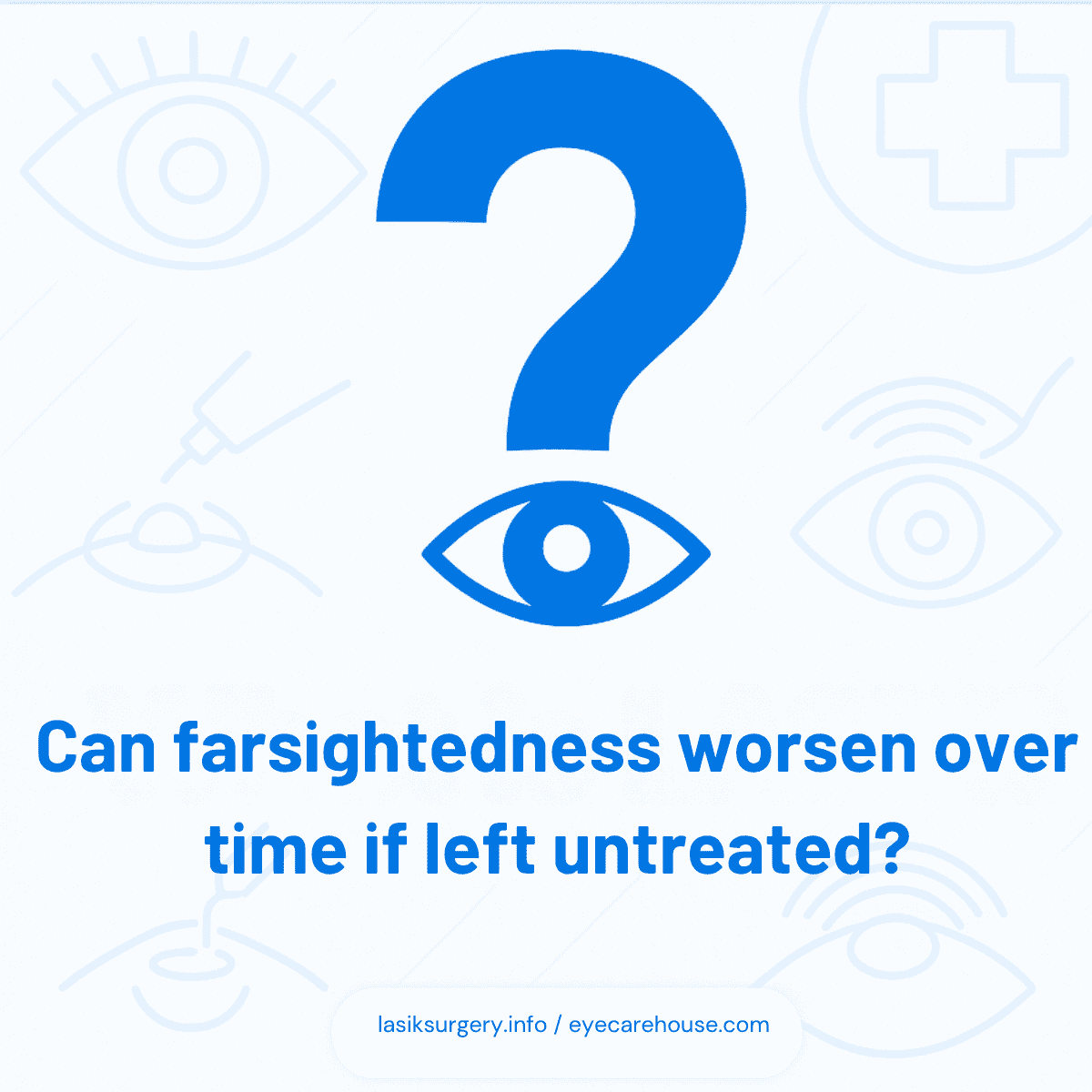
Presbyopia is an age-related condition that affects the lens’s flexibility, making it hard to focus on nearby objects. Farsightedness, in contrast, is due to the eye’s physical shape.
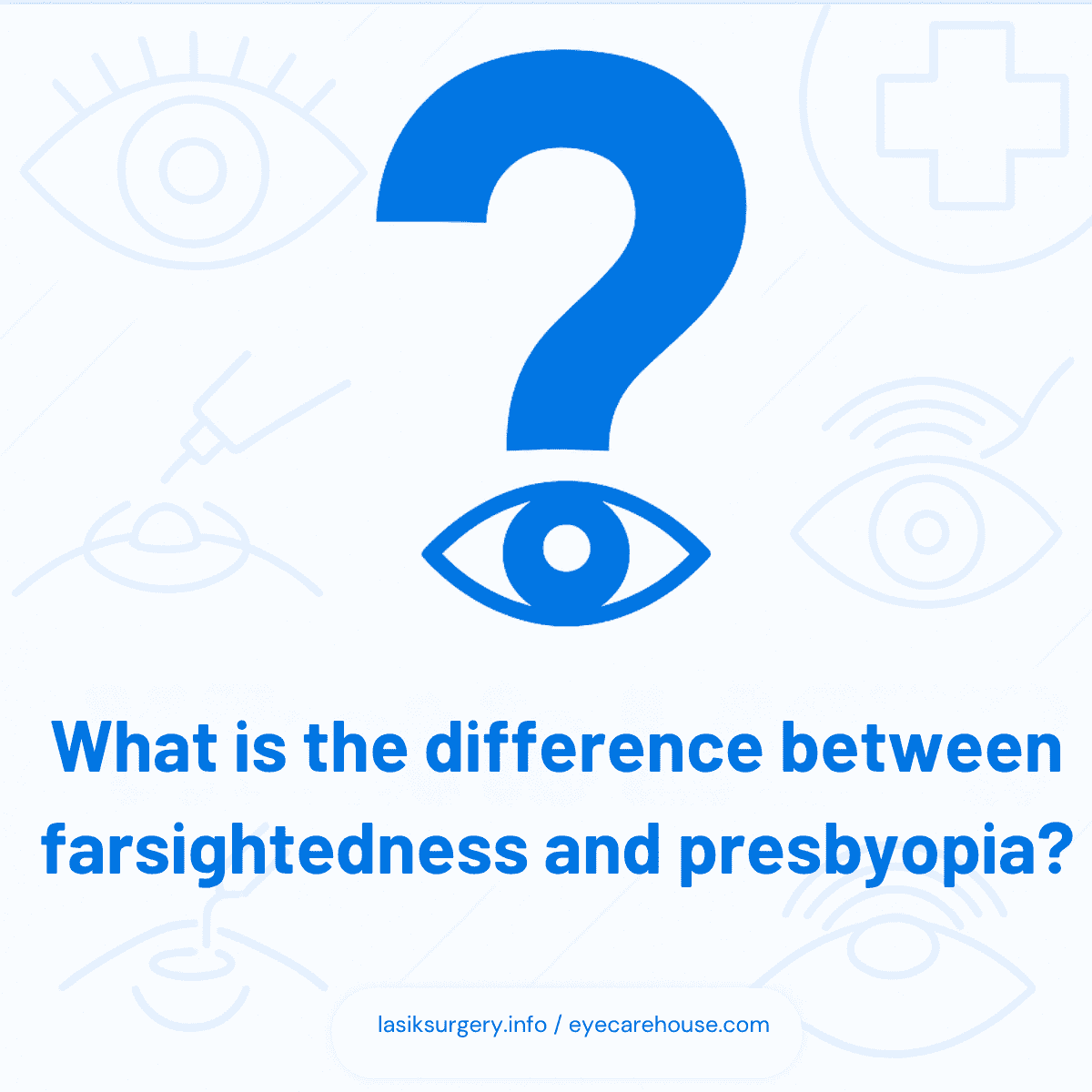
Routine eye exams are recommended every one to two years for people with farsightedness to monitor changes and ensure the most accurate prescription and eye health.
